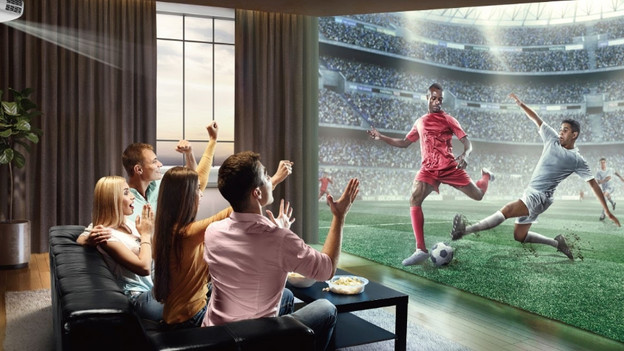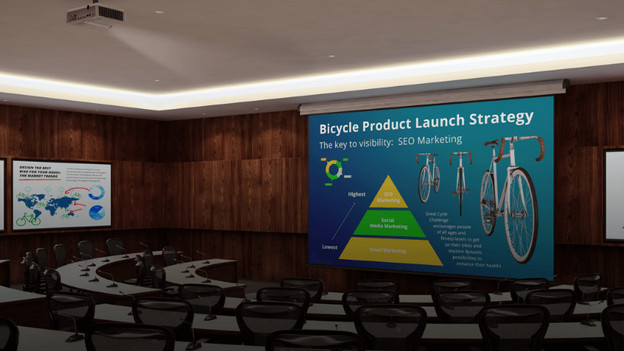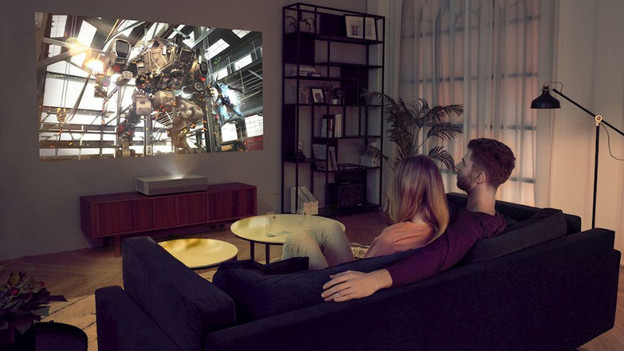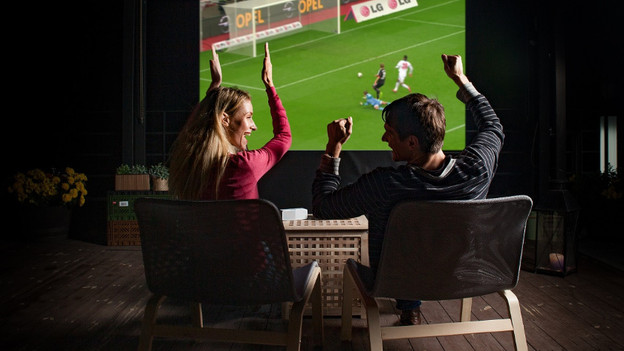
Written by Laurence
Edited on
10 January 2025
·
15:56
How do I choose the light output of a projector?
You can compare a projector light with a light bulb. The higher the light output, which is expressed in ANSI lumen, the brighter the light. The amount of ANSI lumen influences the brightness of your projection, but a higher light output isn't necessarily better. On this page, we'll explain which factors influence the light output and which amount of ANSI lumen your projector needs.

Amount of ambient light
The light of your beamer is influenced by the light in the room, also known as the ambient light. For example, due to daylight or artificial lighting in a room, the projection light of a projector may be less bright or even poorly visible. A higher amount of ANSI lumen ensures an extra bright projection. In a darker room, you don't need as much ANSI lumen, because the projections are clearly visible in the dark. When the light output is too high, dark black parts might even turn into gray.

Size of the projection surface
Ambient lighting isn't the only thing of influence on the needed ANSI lumen. Part of the light is also 'lost' when you enlarge the projection surface. In that case, the light has to spread out over a large surface, which impacts the brightness. So you need a higher amount of ANSI lumen for larger projections as well. The same applies for the other way around, the smaller the surface, the lower amount of ANSI lumen you need.

The projection distance
The last factor to influence the amount of light output, is the distance between the projector and the projection surface. The further the beamer stands away from the wall or projection surface, the more ANSI lumen you need. A few meters closer or further away won't make much of a difference. Do you need the projector that can stand further away in a large room? Choose a projector with a higher amount of ANSI lumen.

Living room: 1000 to 3800 ANSI lumen
The amount of ANSI lumen you need in a livingroom mainly depends on the ambient lighting. That's because you can't fit huge projections on the walls of your livingroom and the projection distance is small. If you have a livingroom that you can make completely dark during the day or if you watch movies at night, 1000 ANSI lumen is sufficient. A bright projector light might have an adverse effect in this case, because the darker parts on the projection will be dark gray instead of black. Do you mainly play games or watch series and movies during the day? From 2000 to 3800 ANSI lumen is suitable for you.

Conference rooms: at least 3000 ANSI lumen
Generally speaking, people work at the office during the day. So conference rooms are brightly lit with daylight, so projections can be unclear soon. Choose a beamer with a light output of at least 3000 ANSI lumen, so you don't have to close the curtains each time. Is the conference room very large, about the size of a conference hall? If so, the projector falls under 'large room' and requires a minimum of 4000 ANSI lumen.

Classrooms: at least 3000 ANSI lumen
Classes at school also take place during the day. Because the classrooms are also brightly lit, your beamer needs a higher light output. If you want bright projections, choose a projector with at least 3000 ANSI lumen light output. Is the classroom very large, about the size of a gym? It falls under 'large room' and requires at least 4000 ANSI lumen.

Large room: at least 4000 ANSI lumens
There are a couple of reasons to why your projector needs at least 4000 ANSI lumen in a large room. The projection surface is often larger, so the light spreads out over a larger surface. Also, large conference halls or lecturer halls aren't very dark most of the time, so the beamer light has to be brighter. In addition, the projector often has a large projection distance, so it 'loses' light along the way. So it's useful to have extra ANSI lumen.

Outside in the dark: 4000 ANSI lumen
You can already see yourself outside on the lounge set, watching an exciting movie or soccer game. Unfortunately, there are a few things to keep in mind when you want to use the projector outdoors. For example, the projector needs to have at least 4000 ANSI lumen and it needs to be dark out. The brightness of the projector light can't compete with the sun, which shines with a strength of about 120,000 ANSI lumen.
Article by Laurence
Projector Expert.
